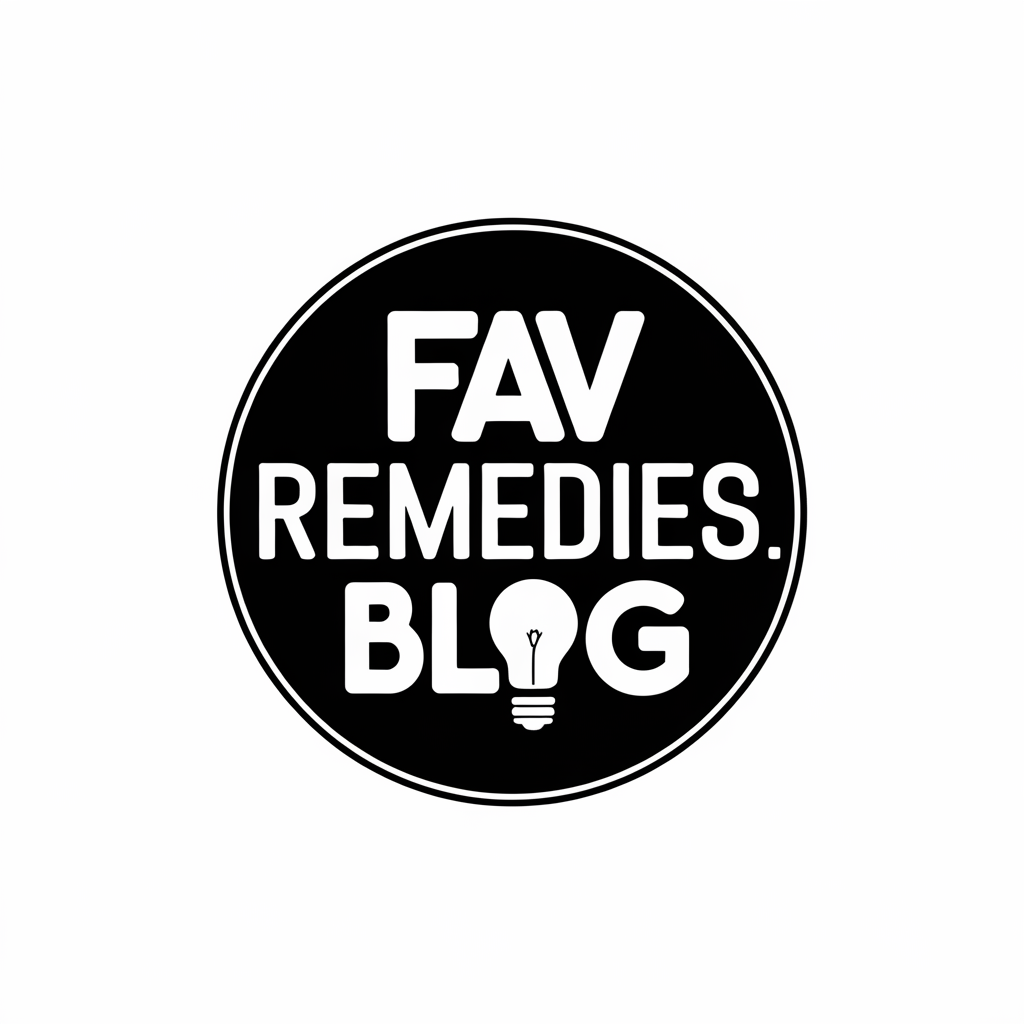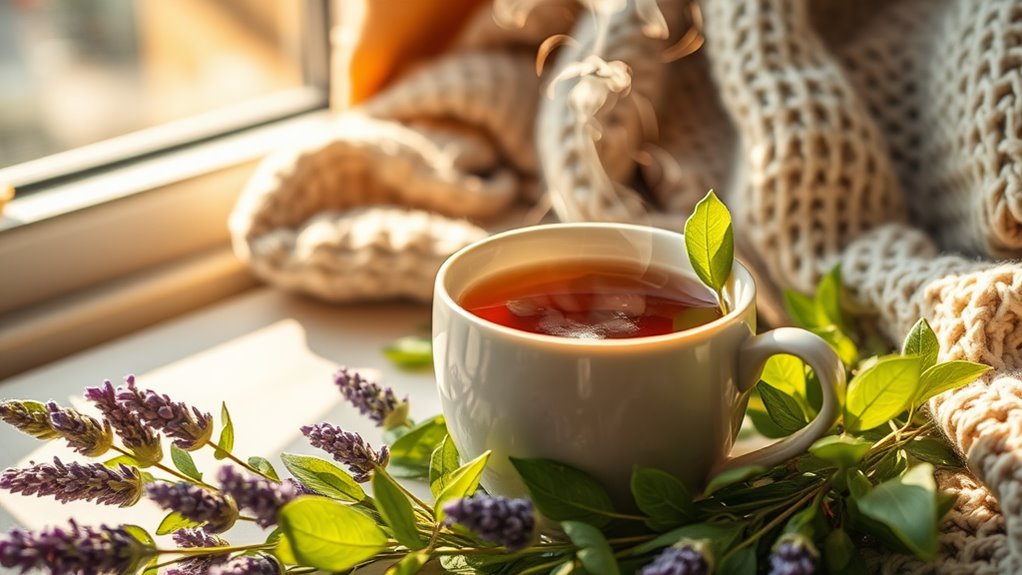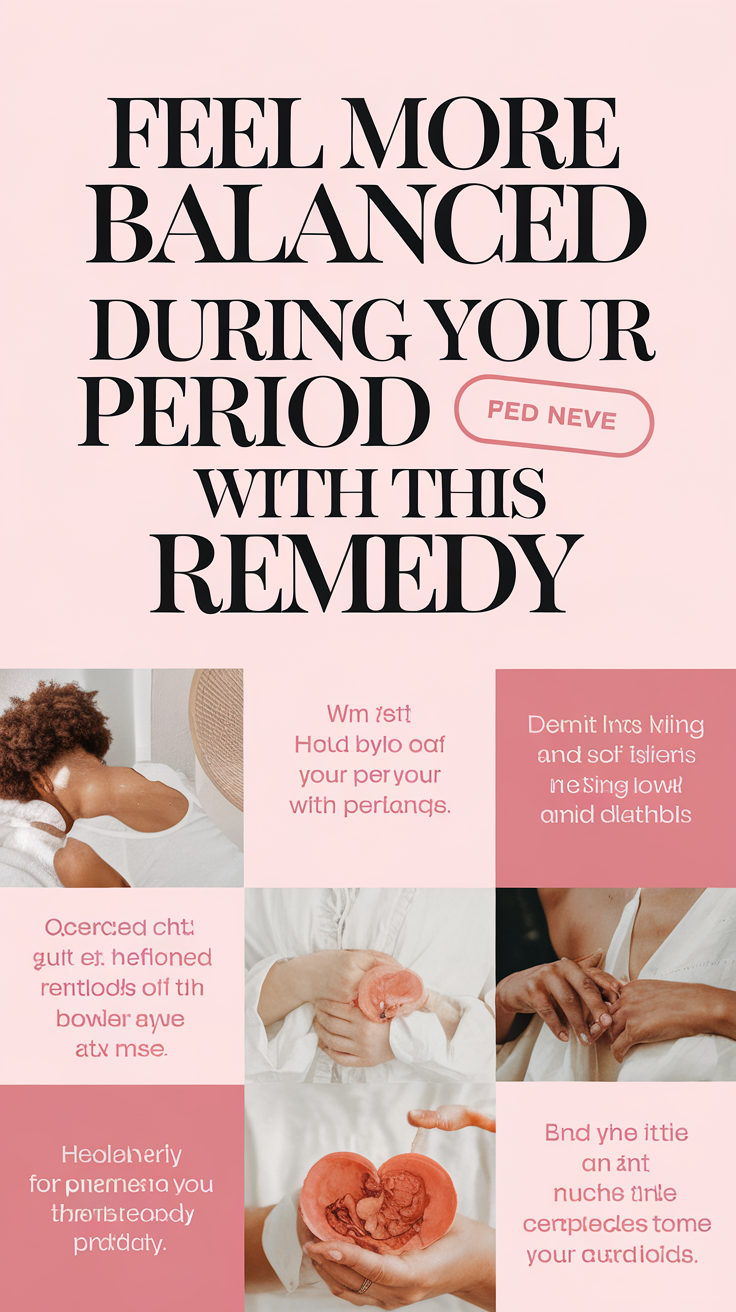Feel More Balanced During Your Period With This Remedy
To feel more balanced during your period, focus on a combination of nutrition, gentle exercise, and soothing remedies. Stay hydrated, eat iron-rich foods, and incorporate magnesium and Omega-3 fatty acids to ease cramps and mood swings. Light activities like walking or yoga can boost your mood. You can also explore herbal remedies and essential oils for natural relief. Plus, acupressure techniques might help alleviate pain. There’s even more to discover for your comfort and well-being.
Key Takeaways
- Incorporate gentle exercise, like yoga or walking, to boost endorphins and improve mood during your period.
- Use heat therapy, such as heating pads or warm baths, to soothe cramps and promote relaxation.
- Stay hydrated and consume nutrient-rich foods, especially those high in iron, magnesium, and Omega-3 fatty acids to alleviate symptoms.
- Explore herbal remedies like ginger and chamomile, or use essential oils such as lavender and clary sage for natural relief.
- Create a calming environment with soft lighting, comfortable blankets, and soothing scents to enhance your sense of balance and tranquility.
Understanding Menstrual Discomfort
While it’s common to experience menstrual discomfort, understanding its causes can empower you to manage it more effectively.
Menstrual cramps often arise from the uterus contracting to shed its lining, which can lead to pain and discomfort. Hormones called prostaglandins trigger these contractions, and higher levels can intensify cramps. Research shows that higher prostaglandin levels are linked to more severe menstrual cramps.
Knowing this, you can seek menstrual cramp relief through various methods. Heat therapy, like a warm bath or heating pad, can soothe aching muscles. Over-the-counter pain relievers can also help reduce inflammation and cramping. Gentle exercise, such as walking or yoga, may improve circulation and alleviate pain. Additionally, techniques like pressure point therapy can provide immediate relief from cramps.
The Role of Nutrition in Menstrual Health
Nutrition plays an essential role in managing your menstrual health.
By focusing on vital nutrients and incorporating specific foods, you can alleviate common symptoms and feel more balanced.
Let’s explore how the right diet can support you during your period.
Essential Nutrients for Menstruation
When it comes to managing your menstrual health, the right nutrients can make all the difference. Key vitamins and minerals can help support your body during this time.
Iron is essential, as it replenishes lost blood and prevents fatigue. Magnesium can ease cramps and promote relaxation, while Vitamin B6 helps combat mood swings. Omega-3 fatty acids reduce inflammation and may alleviate discomfort.
Don’t forget about calcium, which supports muscle function and may help with bloating. Hydration is also important, so drink plenty of water.
Incorporating these essential nutrients into your diet can empower you to feel more balanced and energized throughout your cycle. Remember, taking care of yourself nutritionally is a significant part of your menstrual health.
Foods to Alleviate Symptoms
How can the foods you choose impact your menstrual symptoms? The right nutrition can make a significant difference in how you feel during your period.
Incorporate foods rich in omega-3 fatty acids, like salmon and walnuts, to help reduce inflammation and cramps. Leafy greens, such as spinach and kale, provide essential iron and magnesium, which can ease fatigue and mood swings.
Don’t forget about whole grains and legumes; they stabilize blood sugar levels, helping to curb cravings and irritability. Additionally, fruits like bananas and berries offer natural sugars and antioxidants, supporting overall wellness.
Staying hydrated is essential too—opt for herbal teas to soothe discomfort. By choosing the right foods, you can support your body and alleviate menstrual symptoms effectively.
Herbal Remedies for Cramp Relief
If you’re looking for natural ways to ease menstrual cramps, herbal remedies can be a great option.
Many effective herbs can help relieve discomfort, and knowing how to prepare and dose them properly is key.
Let’s explore some of the best herbal choices and how to use them effectively.
Effective Herbal Options
Many women find relief from menstrual cramps by turning to herbal remedies that have been used for generations.
These natural options can help ease discomfort without the side effects often associated with over-the-counter medications.
Here are some effective herbal options you might consider:
-
Ginger: Known for its anti-inflammatory properties, ginger can reduce pain and nausea.
-
Chamomile: This soothing herb may help relax muscles and decrease cramping due to its anti-spasmodic effects.
-
Peppermint: The menthol in peppermint can provide a cooling sensation and help alleviate pain by relaxing the uterine muscles.
Incorporating these herbs into your routine may offer you the comfort and relief you’re seeking during your period.
Always listen to your body and choose what feels right for you.
Preparation and Dosage Tips
When you’re looking to relieve menstrual cramps with herbal remedies, proper preparation and dosage can make a significant difference. Start by choosing high-quality herbs and follow these essential tips to maximize their effectiveness.
| Herb | Dosage |
|---|---|
| Ginger | 1-2 grams daily |
| Chamomile | 1 cup tea, 2-3 times daily |
| Cramp Bark | 1-2 teaspoons, tincture |
| Peppermint | 1 cup tea, as needed |
Make sure to consult a healthcare professional before starting any new herbal regimen, especially if you’re taking medication. Always listen to your body, and adjust dosages as necessary for your comfort and relief.
The Benefits of Hydration
Here are some key benefits of staying hydrated:
-
Reduces bloating: Proper hydration helps flush out excess sodium, minimizing water retention. This is crucial as excess sodium can exacerbate feelings of bloating.
-
Eases headaches: Dehydration can trigger headaches, so drinking enough water can keep them at bay.
-
Relieves cramps: Staying hydrated may help reduce the severity of menstrual cramps by improving circulation. Additionally, proper hydration can also aid in preventing constipation, which is common during your period.
Gentle Exercise and Stretching Techniques
While hydration plays an essential role in easing menstrual discomfort, gentle exercise and stretching can also make a significant difference in how you feel during your period.
Engaging in light activities, like walking or yoga, helps boost endorphins and reduces cramps. Stretching can alleviate tension in your lower back and abdomen. You might try simple poses like Child’s Pose or Cat-Cow to release tightness and promote relaxation. Incorporating natural energy-boosting techniques can enhance your overall well-being during this time.
Just fifteen minutes of movement can enhance circulation and lift your mood. Listen to your body; if you need to rest, that’s okay too. Finding the right balance between activity and rest is key. Additionally, incorporating natural remedies can further support your comfort during this time.
Incorporating gentle exercise into your routine can empower you to navigate your period with greater ease and comfort.
Mindfulness and Relaxation Practices
As you navigate the ups and downs of your period, incorporating mindfulness and relaxation practices can be a powerful way to soothe both your body and mind.
These techniques help you connect with yourself and ease discomfort, promoting a sense of calm and balance. Engaging in deep breathing exercises can significantly reduce anxiety symptoms and enhance relaxation.
-
Deep Breathing: Take a few moments to focus on your breath. Inhale deeply through your nose, hold for a moment, and exhale slowly through your mouth.
-
Meditation: Set aside time to meditate, even if it’s just for five minutes. This can help clear your mind and reduce stress.
-
Gentle Yoga: Engage in gentle yoga stretches that promote relaxation and alleviate tension in your body.
Integrating these practices can help you feel more centered during your period. Additionally, employing the 4-7-8 breathing technique can enhance your relaxation and aid in achieving a restful state of mind.
Essential Oils for Soothing Symptoms
Incorporating mindfulness practices can enhance your overall sense of well-being, especially during your period. One effective way to soothe symptoms is by using essential oils.
Lavender oil can help relax your muscles and ease tension, while clary sage is known for its ability to balance hormones and relieve cramps. Peppermint oil may provide a cooling sensation, reducing feelings of discomfort. Additionally, lifestyle changes such as regular physical activity and stress management can further support your hormonal balance during this time.
To use these oils, dilute a few drops in a carrier oil and gently massage it into your abdomen. You can also add a few drops to a diffuser for an uplifting aromatic experience.
Acupressure Points to Alleviate Pain
If you’re struggling with pain during your period, acupressure can be a game changer. By targeting key acupressure points, you can relieve discomfort and restore balance. Let’s explore some effective techniques for applying pressure to these points. Additionally, acupressure is a natural remedy that has been shown to provide faster headache relief than conventional painkillers.
Key Acupressure Points
When menstrual discomfort strikes, knowing where to apply acupressure can make a significant difference in how you feel.
Here are some key acupressure points that can help relieve pain and promote relaxation:
-
SP6 (Spleen 6): Located about four fingerbreadths above your inner ankle bone, this point can ease cramps and improve overall menstrual health.
-
LV3 (Liver 3): Found on the top of your foot, between the first and second toe, this point helps relieve stress and tension, often linked to menstrual symptoms.
-
PC6 (Pericardium 6): Situated on your inner forearm, about two fingerbreadths from your wrist, this point can alleviate nausea and anxiety.
Try applying gentle pressure to these points to find relief during your period.
Techniques for Application
To effectively alleviate pain during your period, it’s essential to know how to apply pressure to the key acupressure points.
Start by finding the point on your lower abdomen, about two inches below your navel. Use your fingertips to press firmly for 30 seconds while breathing deeply.
Next, locate the inner ankle point, about four finger widths above the inner ankle bone. Apply gentle pressure here for a minute.
Finally, try the wrist point, on the inner wrist about three finger widths from the base. Press this area for 30 seconds.
Remember to stay relaxed and focus on your breathing throughout the process. These techniques can help ease cramps and bring you greater comfort during your cycle.
Creating a Comforting Environment
Creating a comforting environment can greatly ease the discomfort many experience during their period. By making simple changes to your space, you can foster a sense of calm and relief.
Here are some ideas to help you create that comforting atmosphere:
-
Soft Lighting: Use warm, dim lighting or candles to create a soothing ambiance that helps you relax.
-
Cozy Textiles: Surround yourself with soft blankets and pillows to provide physical comfort and warmth.
-
Aromatherapy: Incorporate calming scents like lavender or chamomile through essential oils or candles to enhance your mood.
When to Seek Professional Help
How can you tell if your period pain is more than just typical discomfort? If you experience severe pain that doesn’t improve with over-the-counter medication, it’s time to consult a healthcare professional.
Additionally, if your pain interferes with daily activities, or if you notice heavy bleeding, blood clots, or irregular cycles, seek help. Other signs include symptoms like nausea, vomiting, or fatigue that are hard to manage.
Remember, it’s important to advocate for your health. You deserve to feel comfortable and balanced during your period. A professional can help identify underlying conditions, such as endometriosis or fibroids, and provide appropriate treatment options.
Don’t hesitate to reach out if you’re concerned; your well-being is a priority.


